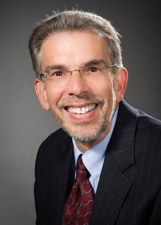Takeaway
Patients often experience the most vulnerable moments of their lives with clinicians. These shared intimacies refuel my passion for caregiving and are a fulfilling part of medical practice.

Passion in the Medical Profession | July 19, 2023 | 2 min read
By Eric Last, DO, Northwell Health, Wantagh, New York
For generations, physicians have spoken of the “sacred space.” That space isn’t necessarily a physical place, defined by walls, doors, or borders. There’s no need for measured distances or boundaries to define the sacred spaces to which we’re privy. They can exist in an exam room, a chance encounter in a supermarket, or during a phone call. There are times when we open a physical door or pass through a corridor to enter a sacred space. And there are times when a physical space that had been sacred just moments before is ordinary later. The sacred spaces of medicine are defined by moments, words, feelings, emotions. We may not plan for a given interaction to be in a sacred space, and seemingly ordinary encounters can transform gradually into deeper ones. There’s no sign over a door, no appointment scheduling notation that reads “SACRED SPACE.” Rather, we know these moments when we sense them. Subtly, cautiously we notice a pause, a sigh, a tear, a smile, a laugh, a touch. A quiet voice in the back of our heads says, “Choose your words more thoughtfully, pause for a second longer because you’ve entered that special place with your patient.”
There are patient visits that we expect to be in a sacred space. The sharing of a cancer diagnosis, the discussion of treatment goals, the sadness of progressive cognitive decline. Each of those visits benefit from taking place in the sacred space. However, every encounter with a patient holds the potential to transform into a special one. A simple preoperative evaluation can change course when our question, “Do you have any other questions?” is answered with a tearful bow of the head and a sorrowful, “I’m so sad about my mother’s cancer.” The annual physical exam can transform when the door to a patient’s substance use disorder is opened, and we ally with them to help. The sacred space is built upon a foundation of trust, the rebar of which is the relationship between us and our patients. Those relationships are symbiotic–they allow us to help patients in ways not possible when the interaction is viewed as being strictly clinical. And those relationships help us by refueling our passion for work, by reminding us of our mission. They are among the best remedies for burnout that we have.
Just as climate change threatens our worldly spaces, causing wildfires, droughts, storms, floods, and shrinking glaciers, the changing climate of American healthcare threatens our sacred spaces. The pressure to see more patients, the commodification of visits, the grail of RVU-generated services, the Amazonifcation of primary care all threaten our relationships, and thus our ability to cohabit sacred spaces with those who’ve placed their trust in us. We need to be vigilant to the signals that herald entry into a sacred space and protect each and every encounter. Our patients deserve no less, and our professional health demands it.
This piece expresses the views solely of the author. It does not necessarily represent the views of any organization, including Johns Hopkins Medicine.

